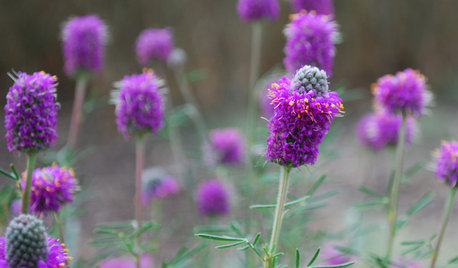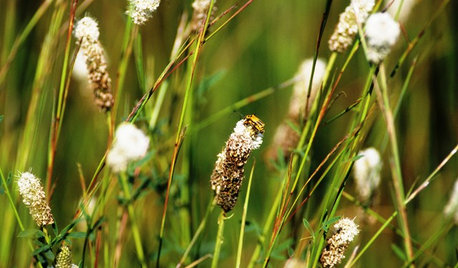Nitrogen 'fixers' besides Purple Prairie Clover?
Vera_ND
21 years ago
Related Stories

GARDENING FOR BUTTERFLIESGreat Design Plant: Purple Prairie Clover
Bees and butterflies and color, oh my! This cheery native perennial will energize your landscape
Full Story
GARDENING GUIDES5 Prairie Wildflowers That Can Heal Your Soil
Get free, organic soil fertilizer with nitrogen-pumping plants that draw pollinators too
Full Story
FRONT YARD IDEASBefore and After: Front Lawn to Prairie Garden
How they did it: Homeowners create a plan, stick to it and keep the neighbors (and wildlife) in mind
Full Story
GARDENING GUIDESGreat Design Plant: Dalea Candida
White prairie clover nourishes wildlife and soil, asking for little more than sun in return
Full Story
GARDENING GUIDES6 Plants That Beat Butterfly Bush for the Wildlife Draw
It's invasive, a nonnative and a poor insect magnet. Check out these better alternatives to butterfly bush in the garden
Full Story
GARDENING GUIDESThe Art of Green Mulch
You can design a natural garden that doesn’t rely on covering your soil with wood and bark mulch
Full Story
GARDENING GUIDESAttract Hummingbirds and Bees With These Beautiful Summer Flowers
Roll out a welcome mat for pollinators to keep your landscape in balance and thriving
Full Story
GARDENING GUIDESGarden Myths to Debunk as You Dig This Fall and Rest Over Winter
Termites hate wood mulch, don’t amend soil for trees, avoid gravel in planters — and more nuggets of garden wisdom
Full Story
EDIBLE GARDENSNatural Ways to Get Rid of Weeds in Your Garden
Use these techniques to help prevent the spread of weeds and to learn about your soil
Full Story
GROUND COVERSGive Your Lawn a Taste of the Wild
Consider the joys of an irregularly trimmed meadow lawn: It’s ecofriendly, visually interesting and still good for romping
Full Story





john_mo
froggy
Related Professionals
Beachwood Landscape Architects & Landscape Designers · Farmington Landscape Contractors · Methuen Landscape Contractors · Natick Landscape Contractors · Paramount Landscape Contractors · Pompton Lakes Landscape Contractors · St. Louis Landscape Contractors · The Woodlands Landscape Contractors · Vallejo Landscape Contractors · Wayland Landscape Contractors · New Carrollton Landscape Contractors · Hyattsville Decks, Patios & Outdoor Enclosures · Novi Decks, Patios & Outdoor Enclosures · Pataskala Decks, Patios & Outdoor Enclosures · Woodland Hills Decks, Patios & Outdoor EnclosuresDoctorant
Vera_NDOriginal Author
john_mo
froggy
lycopus
Vera_NDOriginal Author
lycopus
John_Blakeman
mrnatural
Vera_NDOriginal Author
Doctorant
john_mo
Doctorant
ericwi
nick_b79
peter_6
raptorrunner
pathe9
glen_cdn_prairies_z3
Doctorant